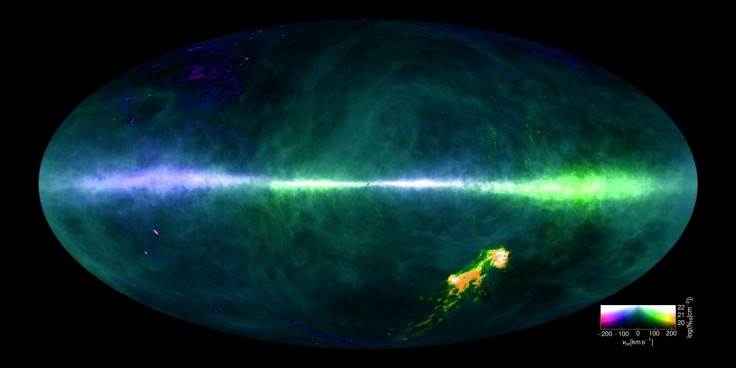Milky Way Hydrogen Map: Scientists Create The Most Detailed Map Of Our Galaxy

A massive survey carried out by a team of Australian and German scientists using the world’s largest radio telescopes has led to the creation of an incredibly detailed map of our galaxy, the Milky Way. The survey, dubbed HI4PI, used two of the world’s largest fully steerable radio telescopes in Germany and Australia to map the distribution of atomic hydrogen — the most abundant element in space.
“We've basically put together a very complex map of hydrogen gases associated with our own Milky Way,” team leader Naomi McClure-Griffiths, a professor at the Australian National University, told Agence France-Presse. “Hydrogen is the most basic element, it’s what everything is made from, and what we have achieved will help us understand better how galaxies form.”
The creation of the map, which reveals, for the first time, the fine details of structures between stars in the Milky Way, took over a million individual observations using Australia’s 64 meter Parkes dish and the 100 meter Max-Planck telescope in Germany.
In addition to furthering our understanding of how stars and other objects in the Milky Way and other galaxies formed over billions of years, having an accurate understanding of the distribution of hydrogen would help fine-tune future observations. For instance, astronomers analyzing X-ray emissions from distant supermassive black holes would now be able to correct their data for interstellar absorption.
“Like the clouds at the sky, all observations we receive from the distant Universe have to pass through hydrogen in our own Milky Way,” Benjamin Winkel from the Max Planck Institute for Radio Astronomy and a member of the HI4PI collaboration, explained in a statement. “The HI4PI data allows us to correct accurately for all these hydrogen clouds and clean the window we are watching through.”
A study describing the research has been published in the latest edition of the journal Astronomy and Astrophysics.
© Copyright IBTimes 2024. All rights reserved.






















